Learning from the dunes: how to design gardens that support native wildlife
Every walk through the dunes of Kennemerland became research into ecological design... by Sylvia Avontuur
Moving from Amsterdam to Haarlem gave me what I'd been dreaming for years: a house with a garden and the opportunity to practice what I teach as a permaculture designer—creating a mostly edible garden that truly connects with the local environment. My new home came with a completely tiled backyard and non-native plants like hydrangeas in the front garden—commonly planted ornamentals that provide little ecological value for native wildlife—a blank canvas to create something that would strengthen local nature while serving as an inspiration for others.
Living closer to my favourite landscape, the coast, meant I could study these natural systems more intensively. Every walk through the dunes of Kennemerland became research into ecological design, succession dynamics, and the incredible biodiversity that emerges when nature follows its own blueprint. What surprised me most was how quickly the transformation happened—within just one year, my garden came alive with insects and wildlife.
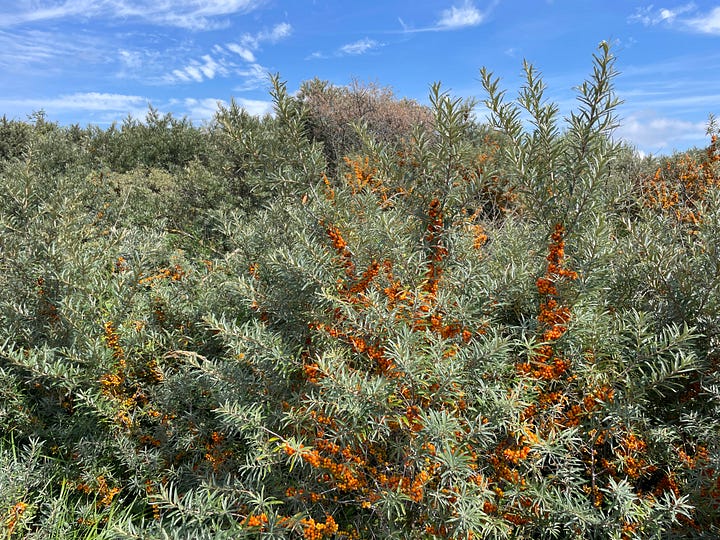
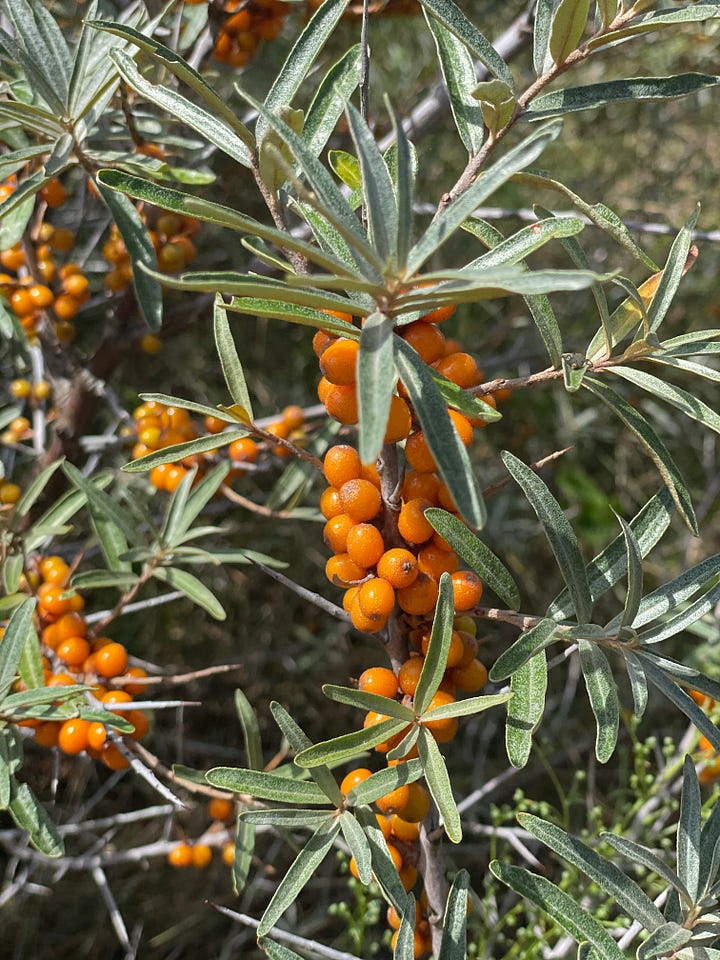
Learning the language of the landscape
One of the foundations of permaculture is working with nature rather than against it. But to understand how to do this, you need to learn how to "read from the book of nature"—to interpret the landscape around you. The dunes became my teacher, showing me how wind, water, and time create resilient ecosystems where every plant has its place and purpose.
In Patrick Whitfield's book "How to Read the Landscape" he explains how understanding succession—the natural progression of plant communities—can transform how we design our spaces. Imagine an abandoned field: bare soil is first colonized by pioneer plants, including many annuals that spread their seeds into any unoccupied space. Once they've established, perennials take over, followed by shrubs and eventually trees, until the land reaches its climax stage.
The dunes showcase this process beautifully. You can see all these stages in one landscape—from bare sand flats where sea rocket and marram grass first establish themselves, gradually creating conditions for shrubs like sea buckthorn, and eventually developing into dune forests with oak as the climax species. Each stage creates the conditions for the next, building soil, providing shelter, and increasing biodiversity.
“You can see the landscape as a series of objects, here a wood, there a field and so on, but it becomes more interesting and meaningful if you see it as series of processes and relationships”
Patrick Whitefield: How to read a landscape - Permanent Publications.
My own garden transformation
After flipping the tiles in my backyard, I found poor building sand, I could have brought in tons of soil and compost to create an instant garden. Instead, I decided to work with ecological succession over time.
I began with pioneer plants that could handle the poor sandy soil, adding nitrogen-fixing species like sea buckthorn, aronia and clover to improve soil conditions. Deep-rooted plants like comfrey, lovage, and chicory helped bring nutrients up from lower soil layers.
Everything I pruned went back onto the soil as mulch, protecting the ground and feeding soil organisms. Kitchen scraps are composted in bokashi buckets and vermicompost bins. In winter, I leave the leaves on the ground to become food again. This creates a self-maintaining system—just like in a forest.
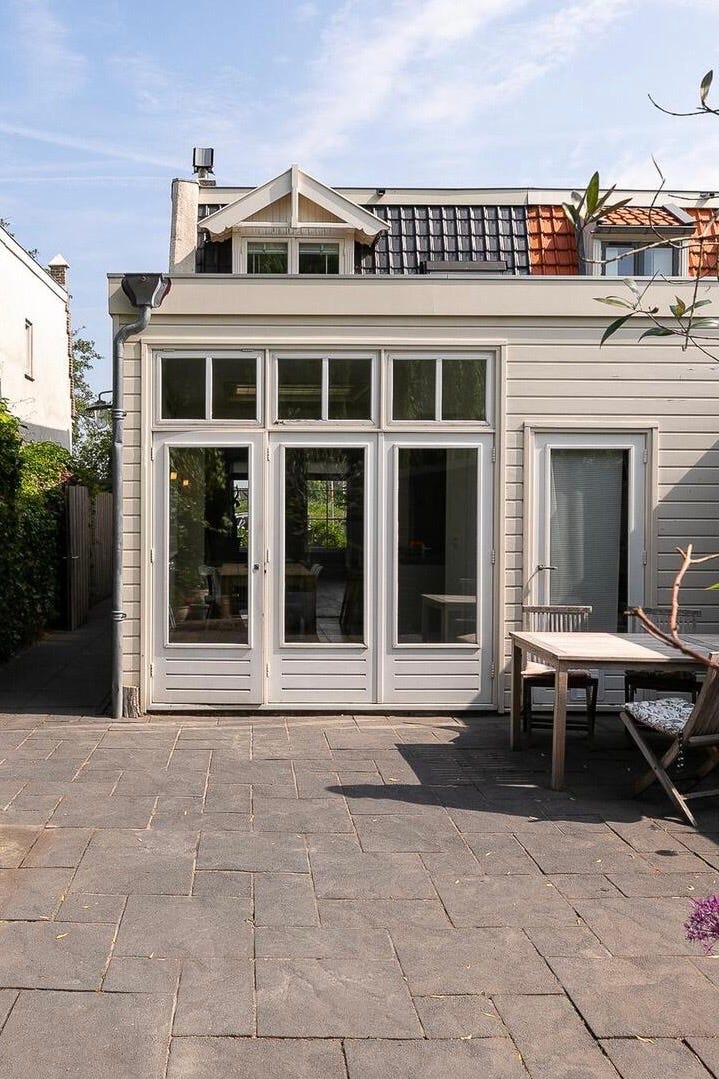
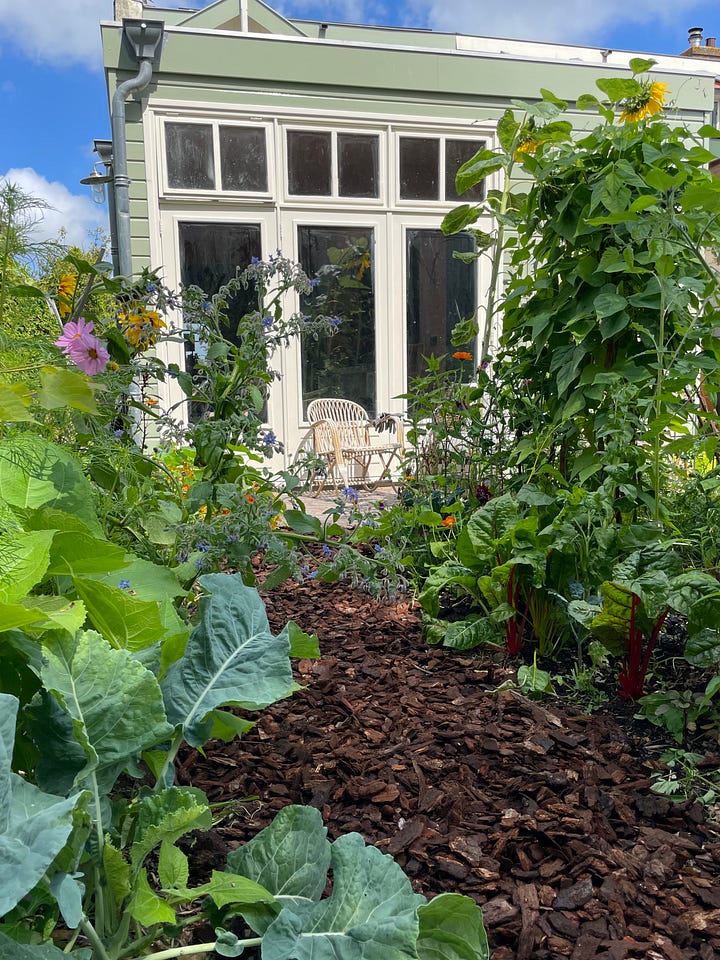
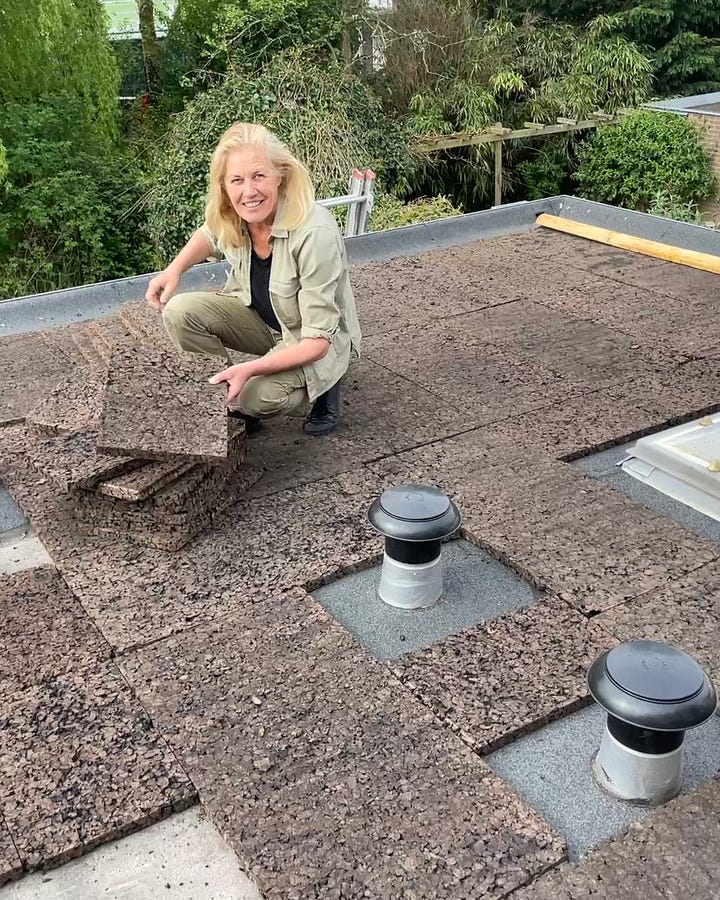
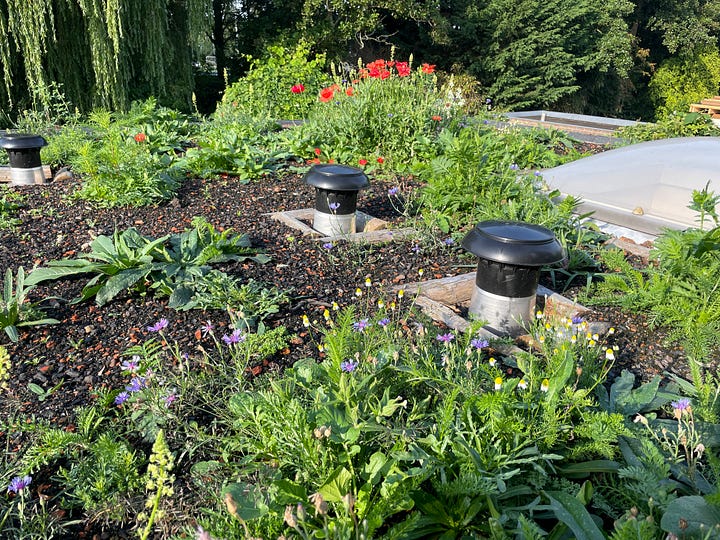
The most exciting experiment has been my rooftop meadow. The substrate is totally from ecological bedding (thanks to help from www.earthkweek.nl), creating better insulation for the kitchen below while supporting local biodiversity. This year in May, I sowed annual and biennial pioneers that thrive on poor soil. The first flowers to bloom were bright blue cornflowers, poppies and chamomile—quick germinators that don't need much—but I've sowed so much more. Some seeds need cold stratification, others have hard seed coats that take time to break down. Patience is key.
Why native plants matter
As a Dune Garden Coach for the jouwduintuin.nl project—a collaboration between IVN Nature Education and National Park Zuid-Kennemerland—my challenge is to make people who live nearby aware about why choosing native plants is crucial. These plants have co-evolved with local insects, birds, and soil organisms over thousands of years, providing food and habitat that non-native plants simply can't support.
Recently, Joeri Uilenreef ranger at National Park Zuid-Kennemerland organized an eye-opening excursion to MediGran in Hoorn, the native seed specialist in North Holland. Director Jurjen Kieft (4th generation family business!) took time to explain the art of high-quality seed saving. He actively seeks out pristine areas in the region where wild native plants grow and harvests manually with light machinery at precisely the right moment for optimal quality.
But there's a critical issue we need to address: the risk of cultivars escaping into natural areas. When cultivars cross-pollinate with wild native species or self-seed into protected habitats, they can disrupt the delicate ecological balance we're trying to preserve. This is why using local, native seed is so important. Cheap foreign seed might seem tempting, but it often isn't synchronized with our local insects, may contain pesticide residues, and blooms at the wrong time for our pollinators. Worse, cross-pollination with wild species in nature reserves can damage the very ecosystems we're trying to protect.
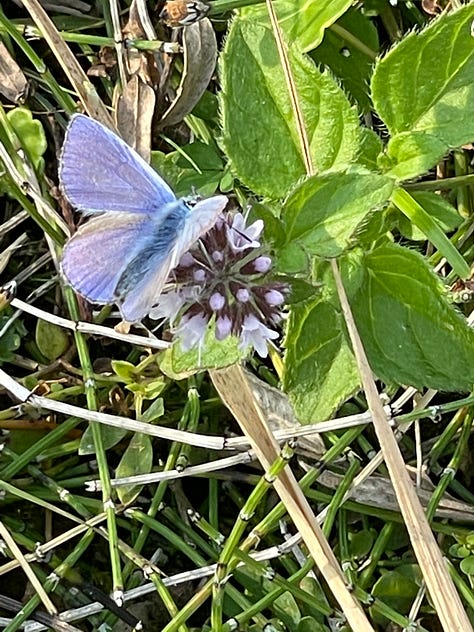
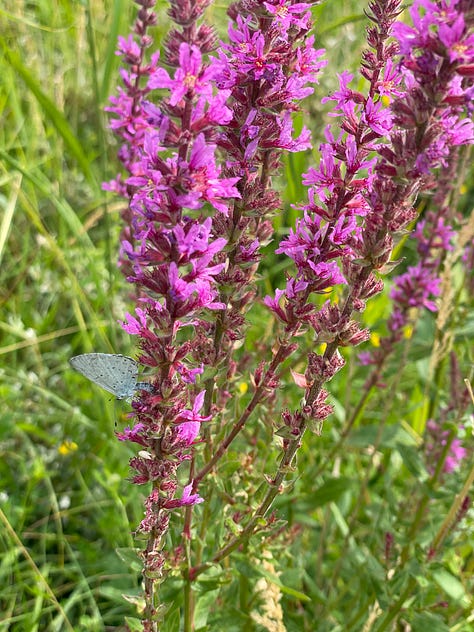
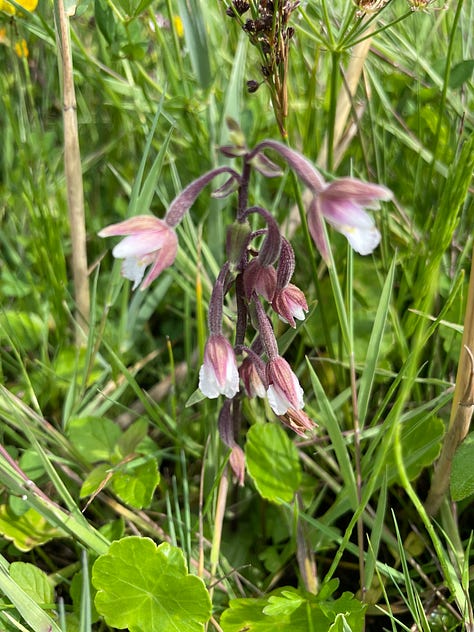
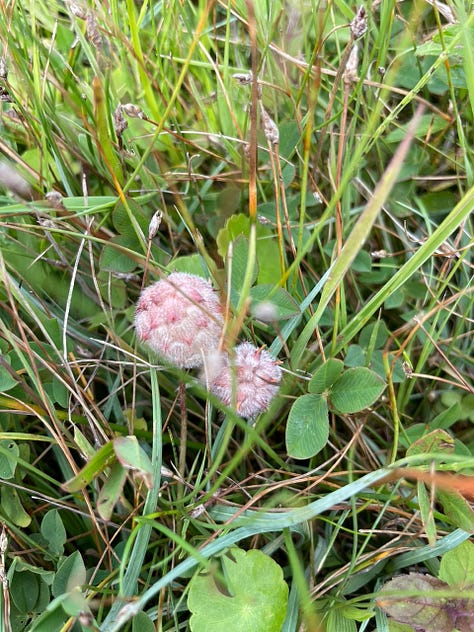
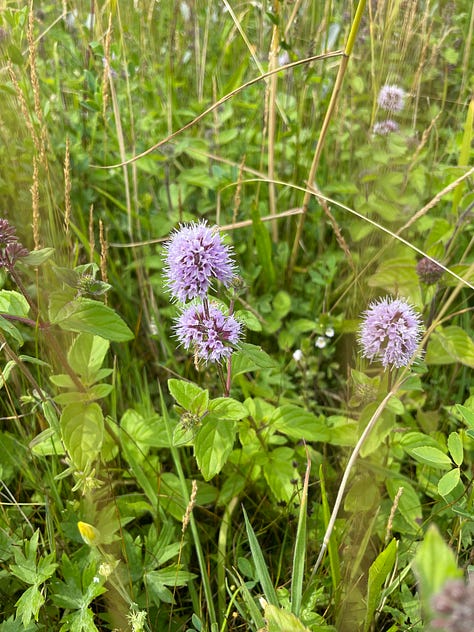
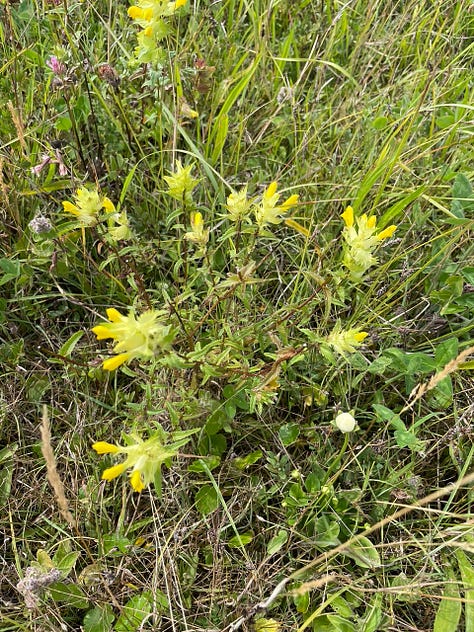
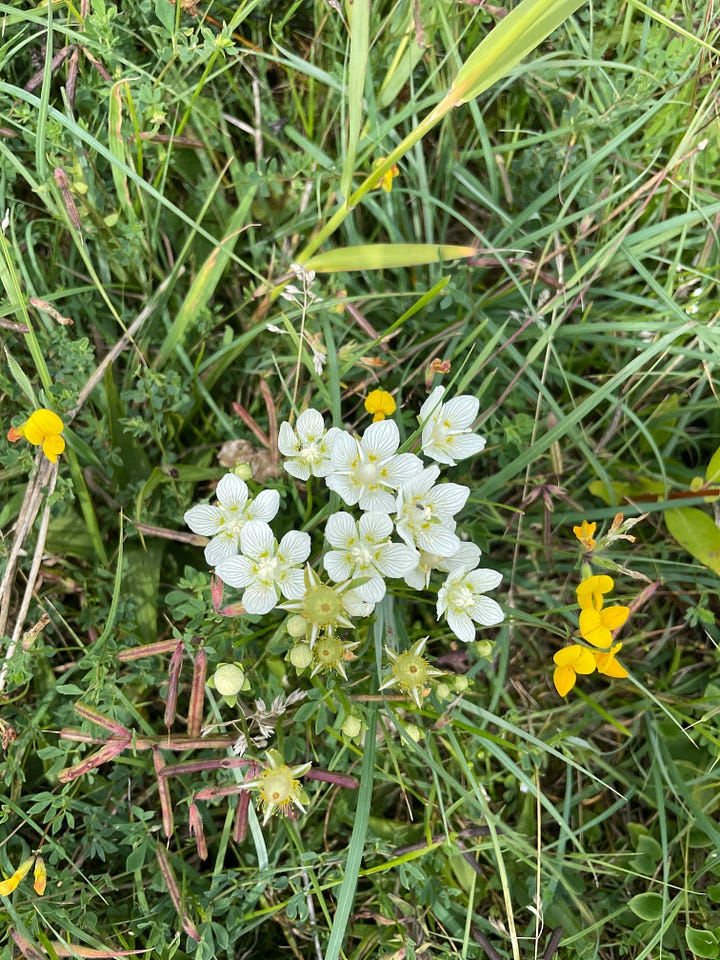
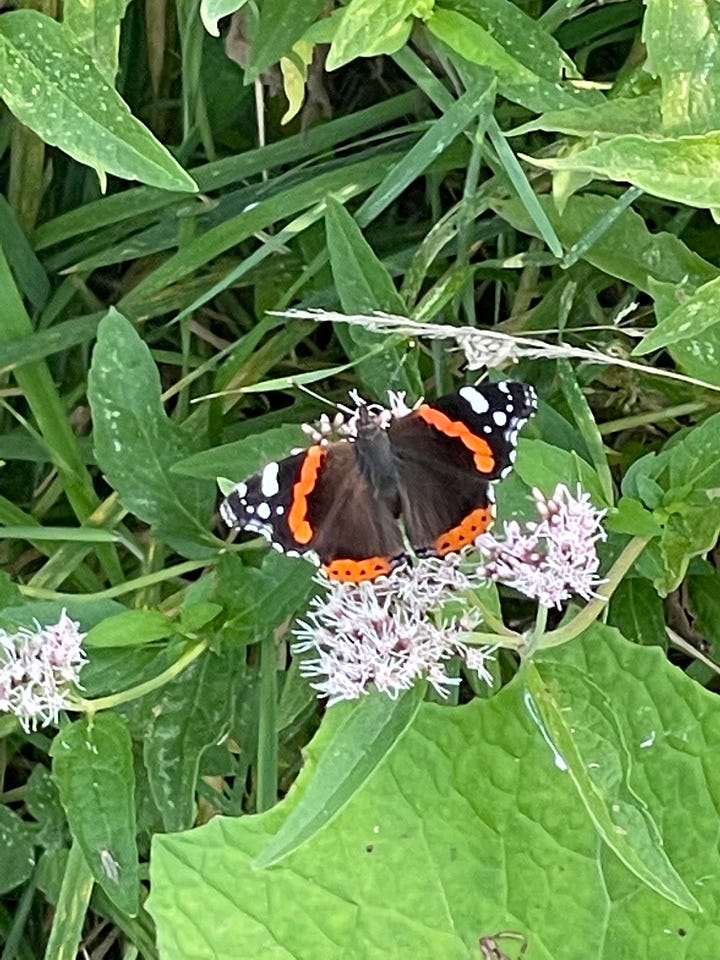
Gardens as stepping stones
When multiple gardens in a neighbourhood use native plants, they create green corridors that allow wildlife to move safely through urban areas. We reduce the need for irrigation and pesticides while creating natural cooling effects and better water management.
If you live in other parts of the Netherlands, streektuinen.nll offers region-specific guidance. A streektuin (regional garden) welcomes the native nature from your local area and forms a stepping stone for local biodiversity. They provide tips for each of the 25 ecological regions, covering specific herbs, shrubs, trees, bees, butterflies and much more.
The trend toward ecological gardening is gaining momentum. People are becoming more comfortable with wilder, more abundant plantings and recognizing the benefits of biodiversity—not just for wildlife, but for creating lower-maintenance, more resilient gardens.
As Mary Reynolds writes in "We Are The ARK," we need to become guardians rather than gardeners. Her movement urgently advocates for home gardeners to bring nature back to their yards and become active participants in positive environmental change. Even small patches of restored native habitat can provide crucial support for pollinators and wildlife in desperate need of sanctuary.
Reading the dunes: a masterclass in succession
The dune landscape may appear uniform at first glance, but it's actually full of surprising contrasts. From rugged embryonic dunes at the coast to moist dune valleys and sheltered dune forests, each area tells a story of succession, disturbance, and recovery.
Near IJmuiden, tucked away behind sea buckthorn thickets, lies an extraordinary wet dune valley. What was once beach has developed over just a few decades into a unique natural area—not just for the Netherlands, but for the entire European coast. Over 400 plant species have been recorded here, with about 10% on the Red List of endangered species (duinbehoud.nl). Walking through in spring and summer, you're overwhelmed by an immense sea of flowers: marsh orchids, white parnassia with their unique hermaphroditic blooms, and rare butterflies dancing with the scent of wild mint in the air.
This landscape teaches us that the most spectacular natural displays come from working with natural processes rather than against them. The key is observation.
Two inspiring dune gardens
If you're to learn more about natural succession and native plant communities, here are two excellent examples of how these principles work in practice:
1. PWN's example dune garden: Located on former drinking water extraction grounds, this demonstration garden showcases how different soil types create space for plant diversity. The lime-rich sand on the seaside supports calcium-loving plants like viper's bugloss and evening primrose, while the inland side with added humus hosts different species. What's fascinating is that many plants grew spontaneously from seeds already present in the dune sand used to create the garden. PWN - Zeeweg 15 Overveen
2. Thijsse's Hof in Bloemendaal: Celebrating its 100th anniversary this year, this two-hectare "dune garden" was created by nature lover Jac. P. Thijsse, who replaced nutrient-rich agricultural soil with fresh dune sand to recreate the Kennemerland dunes in miniature. Over the years, it developed into a varied dune landscape with shifting sands, wet and dry dune grasslands, dune scrubland and forest. Today, manager Johan Görtemöller continues Thijsse's educational mission, showing visitors how even small spaces can support remarkable biodiversity. He's seen zandhagedissen (sand lizards) - proof that these habitat gardens can support even rare species when designed with local ecosystems in mind. thijsseshof.nl
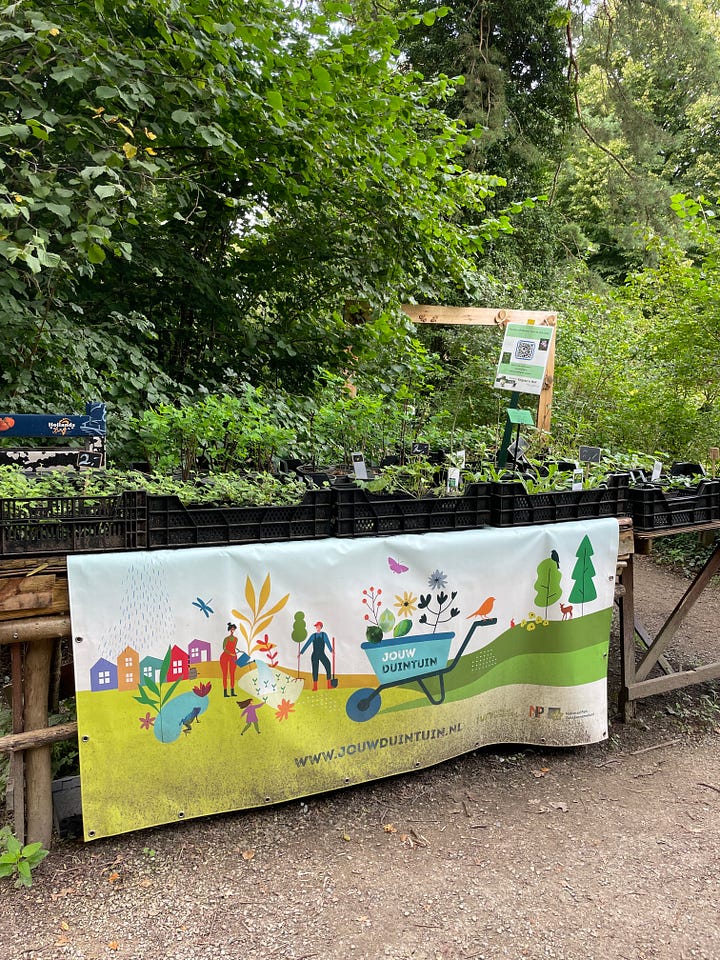
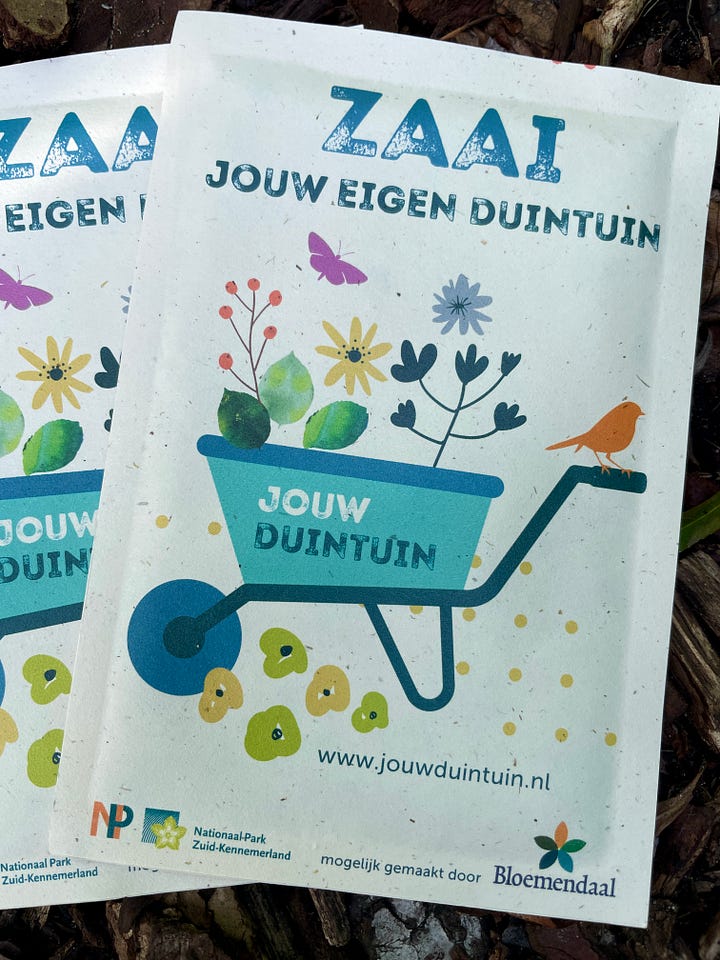
Join us for a guided discovery
Ready to experience this firsthand? Join me on Sunday, August 31st for "What Do Plants Tell Us?"- an introduction to permaculture that combines indoor learning with outdoor discovery. We'll start in Basecamp's greenhouse where Inge Weeda, Green Team Manager, will welcome us and explain how she transformed a former parking lot into a fertile garden. Then we'll venture into IJmuiden's remarkable dune landscape where every plant reveals secrets about working with natural systems.
This morning walk will show you how to read landscapes through their plant communities and understand how these natural patterns can inspire your own garden design and make life easier. Whether you're interested in ecological gardening, sustainable living, or simply want to spend a meaningful morning in nature, you'll gain new perspectives on how everything in an ecosystem connects.
Details: Sunday, August 31st | 10:30-12:30 | Basecamp IJmuiden | €30
Contact: sylvia@cityplot.org
Sylvia Avontuur, Permaculture designer and educator at Cityplot




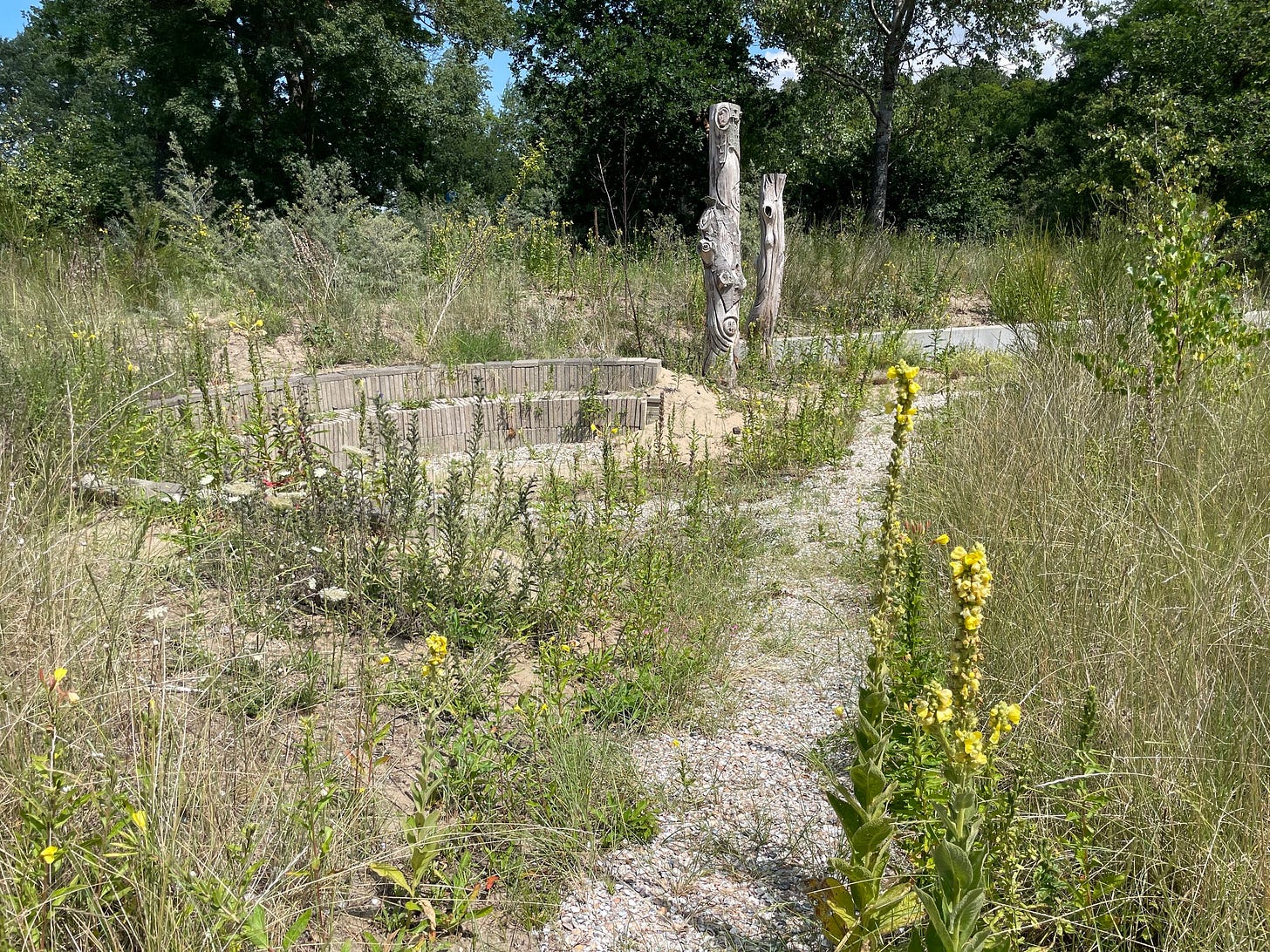
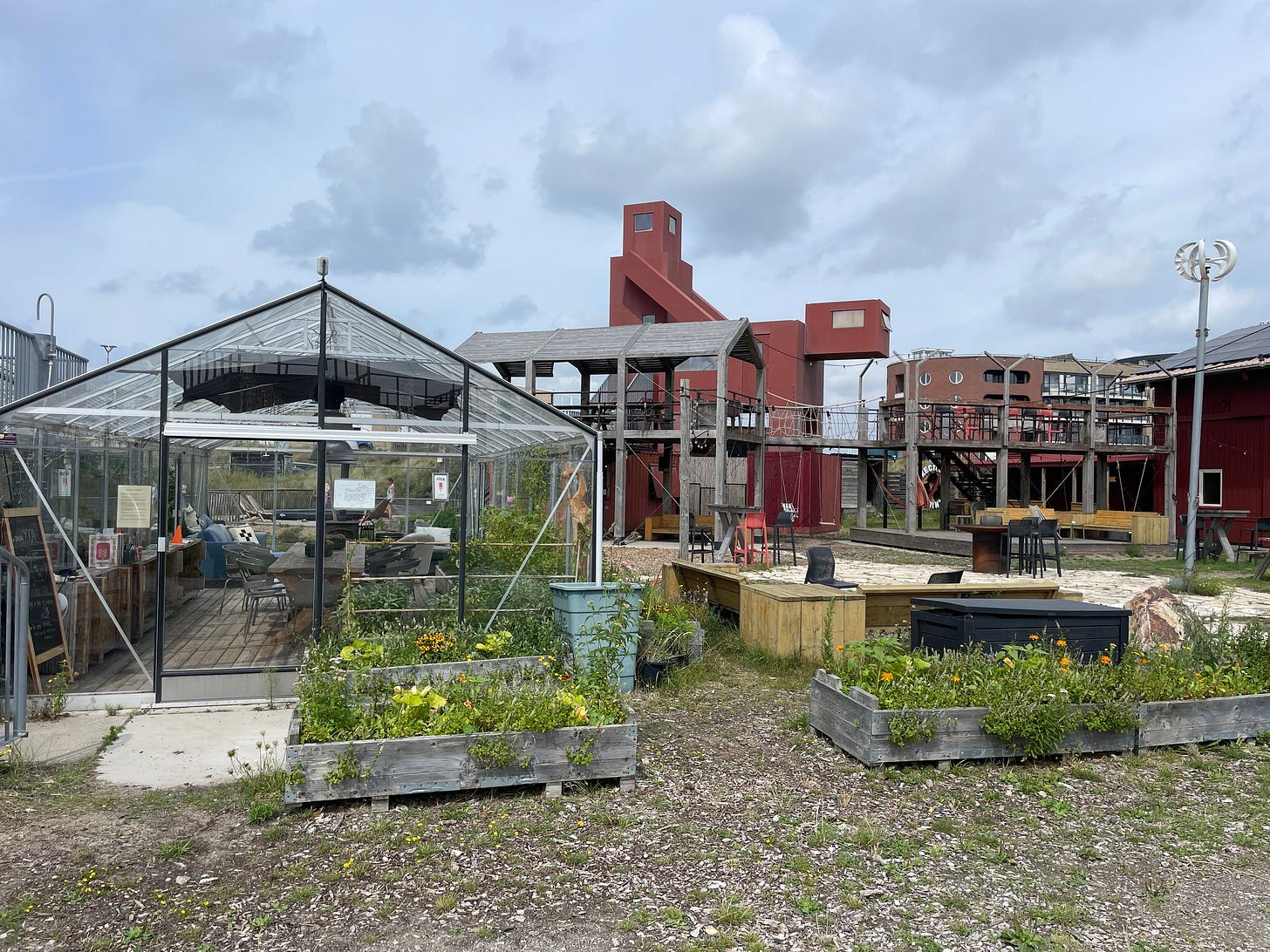

Always great to see native plant gardens! Also very cool to see sea buckthorn in its native habitat. Seems to do well here on the Canadian prairies but it has been a little aggressive with the thicket forming in some contexts.